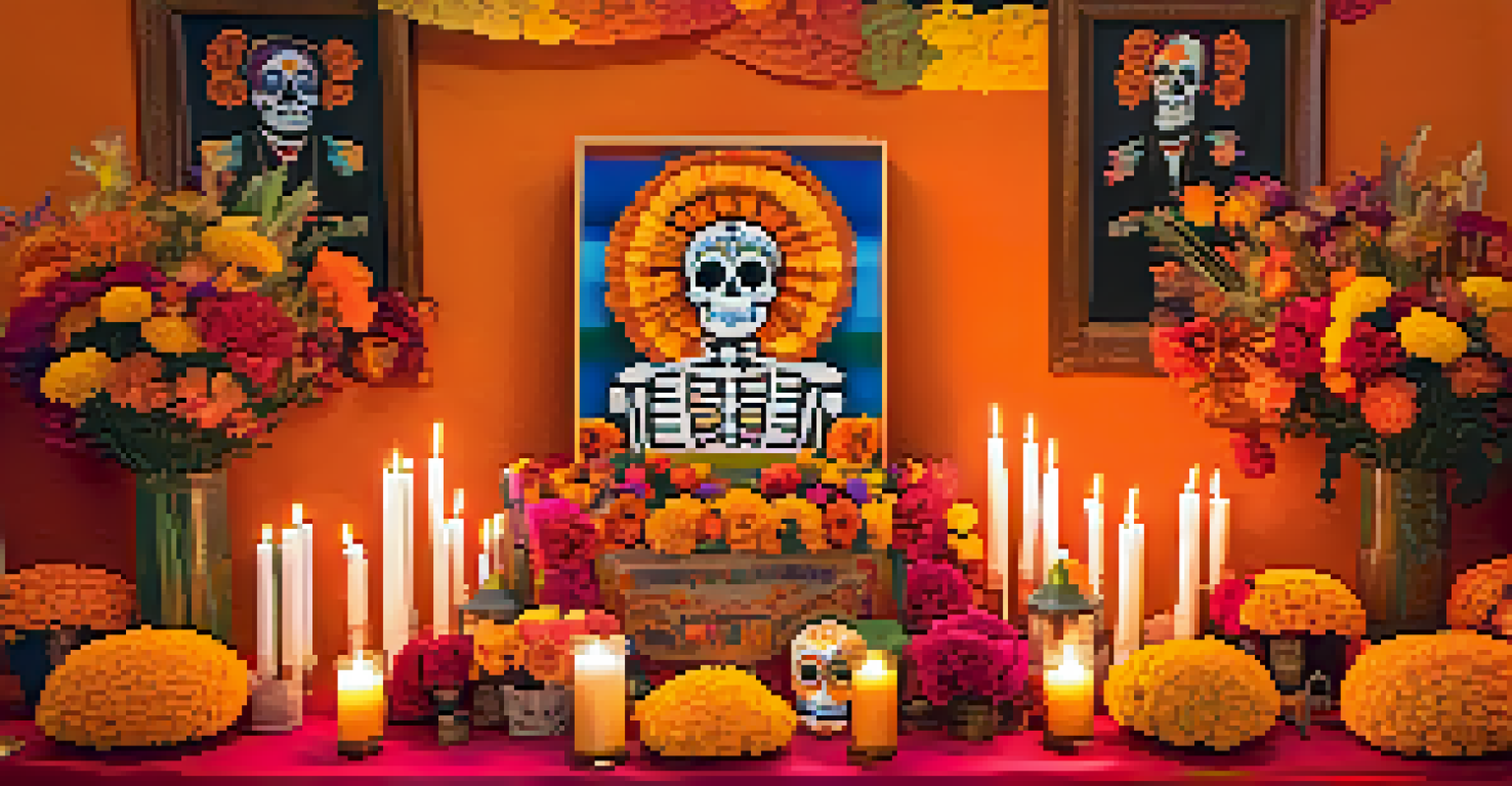The Role of Plants in Rituals and Ceremonies Worldwide

Introduction to Plants in Rituals and Ceremonies
Plants have played a significant role in rituals and ceremonies throughout history. They often symbolize life, growth, and connection to the earth, making them ideal for various cultural practices. From weddings to funerals, plants are woven into the fabric of human experience, highlighting our relationship with nature.
Plants are the earth's endless effort to speak to the listening heaven.
In many cultures, specific plants hold deep spiritual meanings, often tied to the traditions and beliefs of the people. For example, sage is revered in Native American rituals for its cleansing properties, while olive branches symbolize peace in Mediterranean cultures. These associations enrich the symbolism of the ceremonies they are part of.
Understanding the role of plants in rituals helps us appreciate the diverse ways cultures express their beliefs and values. As we explore this topic, we will uncover the unique significance of various plants around the world and how they enhance the experiences of those who partake in these ceremonies.
Plants in Indigenous Rituals and Practices
Indigenous cultures worldwide often incorporate plants in their spiritual and healing practices. For instance, many Native American tribes use tobacco as a sacred offering during prayers or ceremonies, believing it carries messages to the spirit world. This practice highlights the reverence for nature and the deep connection between people and the land.

Similarly, in Aboriginal Australian culture, plants like the bush tomato are used in rituals to convey stories and ancestral knowledge. The use of these plants not only serves a practical purpose but also strengthens cultural identity and continuity. They become living symbols of heritage and tradition.
Cultural Significance of Plants
Plants hold deep spiritual meanings in various cultures, symbolizing life, growth, and connection to the earth.
These examples show how plants are integral to the spiritual lives of Indigenous peoples, serving as tools for connection, healing, and storytelling. By honoring these practices, we gain insight into the values and beliefs that shape these communities.
The Use of Plants in Religious Ceremonies
Many world religions incorporate plants into their ceremonies, each with distinctive meanings and uses. For example, in Christianity, palm branches are used during Palm Sunday to commemorate Jesus' entry into Jerusalem. This practice symbolizes triumph and peace, demonstrating how plants can convey profound spiritual messages.
The clearest way into the Universe is through a forest wilderness.
In Hinduism, flowers like marigolds are used in various rituals, including weddings and pujas (prayer ceremonies). These flowers are believed to attract divine energies and bring blessings to participants. The vibrant colors and fragrances of these plants enhance the sensory experience of the ceremonies, making them more memorable.
By examining the role of plants in these religious contexts, we see how they serve as conduits between the sacred and the everyday. They help create a physical representation of faith, allowing participants to engage more deeply with their beliefs.
Plants and Celebrations: Festivals and Holidays
Plants often take center stage during festivals and holidays around the globe. For example, during the Mexican celebration of Día de los Muertos, marigold flowers are used to create altars for departed loved ones. The vibrant orange and yellow colors symbolize the sun and the cycle of life, bridging the gap between the living and the dead.
Similarly, in Japan, cherry blossoms (sakura) are celebrated during Hanami, a festival that marks the arrival of spring. The act of viewing these delicate flowers brings communities together, fostering connections and appreciation for nature's beauty. It’s a reminder of the fleeting nature of life, reflecting the cultural values of impermanence.
Plants in Healing Practices
Many cultures incorporate medicinal plants in rituals to promote healing and connect individuals to ancestral spirits.
These celebrations illustrate how plants can enhance communal experiences, reinforcing cultural identity and shared traditions. They create a sense of joy and reverence, inviting people to celebrate life and remembrance.
Healing and Medicinal Plants in Ceremonies
Plants are not only symbolic but also serve practical purposes in rituals, especially in healing ceremonies. Many cultures rely on medicinal herbs for their healing properties, incorporating them into spiritual practices. For example, in traditional Chinese medicine, ginseng is often used in rituals to promote health and vitality.
In Africa, the use of plants like African sage in healing ceremonies showcases the interconnectedness of spiritual and physical well-being. Practitioners often perform rituals that include the use of these plants, believing that they facilitate healing by connecting individuals to ancestral spirits.
These examples highlight the dual role of plants in ceremonies: as symbols of spirituality and as agents of healing. Their presence underscores the holistic nature of many cultural practices, where physical health and spiritual wellness are intertwined.
Symbolism of Plants in Life Cycle Events
Plants are often present in life cycle events such as births, marriages, and funerals, serving as powerful symbols of transition and continuity. At weddings, for instance, flowers like roses symbolize love and commitment, while in many cultures, specific plants are used to bless the couple's union.
During funerals, plants like lilies are commonly used to symbolize purity and the hope of resurrection, providing comfort to grieving families. This use of plants during such poignant moments reflects the respect for life and death, illustrating the cyclical nature of human existence.
Plants in Life Cycle Events
Plants serve as powerful symbols during life cycle events, reflecting love, loss, and the cyclical nature of human existence.
By embracing the symbolism of plants in these events, we find a common thread that connects various cultures in their expressions of love, loss, and celebration. These practices highlight the universal human experience and the importance of nature in commemorating life's milestones.
Conclusion: The Enduring Legacy of Plants in Rituals
The role of plants in rituals and ceremonies underscores their importance in human culture and spirituality. Through various practices, plants bridge the gap between the physical and spiritual worlds, enriching our experiences and deepening our connections with nature. They remind us of our roots and the interconnectedness of all life.
As we reflect on the examples discussed, it becomes clear that the significance of plants varies across cultures, yet their presence is a common thread that unites us. Whether through the symbolism of flowers in weddings or the cleansing properties of herbs in healing rituals, plants have a profound impact on our lives.

Ultimately, the enduring legacy of plants in rituals and ceremonies is a testament to our shared humanity. They invite us to honor our traditions while fostering a deeper appreciation for the natural world that sustains us.